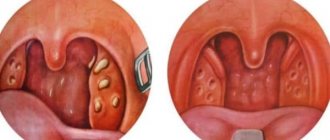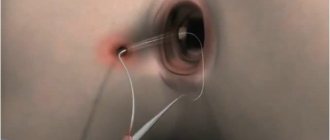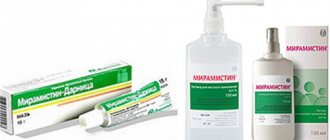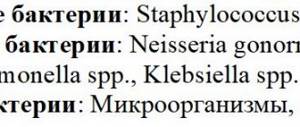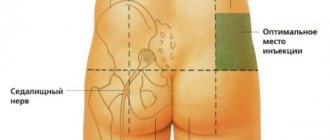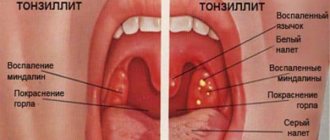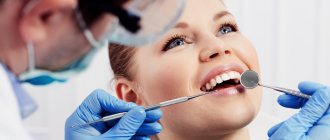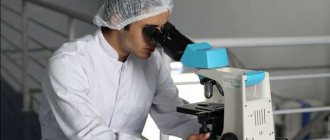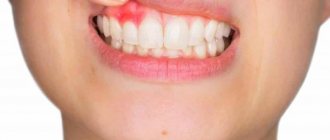Review
Antibiotics for joint inflammation must be used following a specific regimen. It can only be prescribed by a doctor; self-medication is prohibited.
The effectiveness of treatment and possible complications depend on the correct choice of antibacterial drug.
Antibiotics in the form of injections and tablets are used to treat joints. Ointments, creams and other local remedies are ineffective.
Antibiotics of the following groups are used for joints:
- sulfonamides;
- tetracyclines;
- penicillins;
- cephalosporins;
- fluoroquinolones;
- macrolides.
The choice of antibacterial drug depends on the type of pathogen.
Sulfonamides
Antibiotics of this group are most often used for rheumatoid arthritis. These are bacteriostatic antibacterial agents that stop the growth and reproduction of microbes.
A prominent representative of this group is Sulfasalazine. It is effective against streptococci, gonococci, diplococci and Escherichia coli, is well tolerated and rarely causes adverse reactions. The treatment is long-term, the effect is noticeable after 1.5-2.5 months.
Cephalosporins
Cephalosporins have a wide spectrum of antimicrobial action. They are effective against infections of the respiratory and urinary tract, soft tissues, joints, bones and pelvic organs.
If the causative agent of arthritis is gonococcus, strepto- or staphylococcus, then it is worth treating with drugs from the cephalosporin group. It is better to choose the latest generation of medicines, as they are safer and more effective.
Cephalosporins are one of the most popular antibiotics in the treatment of joint diseases. But long-term use can cause bacteria to become resistant to drugs in this group.
For inflammation of the joints and bones, the following antibiotics are suitable:
- Cefazolin. It is a solution for intramuscular and intravenous administration. The active ingredient is cefazolin. Duration of treatment is 1-2 weeks.
- Cephalexin. Available in the form of capsules and oral suspension. The active ingredient is cephalexin.
- Cefotaxime. The active substance is identical to the name of the medicine. This is one of the cheapest antibiotics for diseases of the joints and bones. For parenteral administration only.
- Ceftriaxone. Available in powder form for the preparation of an injection solution.
- Cefepime. This is a cefepime-based drug for parenteral administration.
Tetracyclines
Medicines in this group have a wide spectrum of action and have a bactericidal antibacterial effect. They are effective against aerobic and anaerobic microorganisms.
Simultaneously with antibacterial treatment with tetracyclines, it is necessary to carry out detoxification therapy.
Despite their high effectiveness, tetracyclines have disadvantages in the form of a large list of adverse reactions. Because of this, they should be used only in cases of urgent need.
List of medications:
- Tetracycline. Available in tablet form, it is effective for complicated forms of arthritis.
- Unidox Solutab. These are tablets containing doxycycline. They cannot be prescribed for liver disease, but kidney disease is not a contraindication.
- Amoxicillin. There are 2 forms of release - tablets and suspension for injection. The antibiotic is contraindicated in infectious mononucleosis.
Fluoroquinolones
This group includes broad-spectrum drugs that can be used in the treatment of severe forms of arthritis. They are effective against gram-negative and some gram-positive bacteria, urogenital infections and even mycobacterium tuberculosis.
Fluoroquinolones are not effective against anaerobic bacteria.
List of antibiotics in the treatment of joint diseases:
- Ciprofloxacin. One of the most effective drugs in this group. Effective against inflammation of the joints, which is accompanied by infections of the genitourinary system and ENT organs. The drug is not recommended for use by patients of advanced age, as well as those with cerebrovascular accidents.
- Ofloxacin. It is effective against infections of various origins, but long-term use of the antibiotic can lead to tendon damage.
- Lomefloxacin. Available in the form of tablets with the same active ingredient. Effective if the infection has entered through the digestive system. Not suitable for patients under 18 years of age.
- Norfloxacin. Most often used for arthritis caused by infections of the urinary system, for example, chlamydia, gonorrhea and others. The course of treatment is 1-2 weeks. Tablets are not used for tendinitis and tendon rupture.
Macrolides
Photo from the site vertex.spb.ru
These are the safest antibiotics for treating joints. They rarely cause adverse reactions and do not have a negative effect on the central nervous system. Most effective for tuberculous and chlamydial arthritis.
Representatives of macrolides in the treatment of joint diseases:
- Clarithromycin. The tablets are not suitable for the treatment of patients under 12 years of age. The active substance is quickly eliminated from the body, the likelihood of negative consequences is minimal.
- Erythromycin. The drug is in the form of tablets and suspension for injection with the same active ingredient. The antibiotic is contraindicated in renal and liver failure. A significant drawback is the development of bacterial resistance to the drug.
- Azithromycin. The drug stops the growth of pathogenic microflora and is contraindicated in cases of renal and liver failure. Tablets should be taken once a day, no more than 3 days. Most often, a single dose is enough, the therapeutic effect is prolonged for a week.
Macrolides not only stop the development of the infectious and inflammatory process in joint diseases, but also relieve pain.
Antibiotics that dentists “like” to prescribe
Among the most commonly prescribed antibiotics by dentists are the following.
Ciprofloxacin
Antibacterial spectrum drug. The medicine in the context of the dental area is indicated for postoperative infectious complications - developing purulent-inflammatory processes and dental inflammation (complicated pulpitis).
The drug is taken for dental infections in the form of tablets of 0.5 and 0.25 g. The dosage of the drug is determined by a specialist individually in each specific case.
The medicine usually does not cause side effects. In some cases, allergic reactions may occur in the form of a rash and itchy skin. Swelling of the face and vocal cords is possible. The list of undesirable consequences of taking the drug may include:
- nausea;
- vomit;
- lack of appetite;
- diarrhea;
- abdominal pain;
- insomnia;
- headache;
- feeling of malaise and anxiety.
Taking the drug is accompanied by changes in the patient’s blood test: a decrease in the number of leukocytes, granulocytes and platelets. Disorders of taste perception are very rarely observed.
During treatment with Ciprofloxacin, exposure to ultraviolet rays should be avoided in order to prevent an increase in skin sensitivity to sunlight.
Metronidazole (Trichopol)
A highly effective remedy for various forms of inflammation of the gums and teeth. The drug, through interaction with the DNA of harmful microorganisms, has a bactericidal effect on them.
When taken orally, the medicine is concentrated in the gingival fluid, having a beneficial effect on dental plaque under the gum, this is especially true with proper oral hygiene.
The drug is prescribed in the form of tablets of 0.5 g. Usually taken 1 tablet three times a day. The course of therapy is 10 days.
Possible side effects include:
- headache;
- feeling of dry mouth;
- dizziness;
- peripheral neuritis;
- a metallic taste or bitterness in the mouth after taking antibiotics.
When taking Metronidazole, drinking alcohol is strictly prohibited. Contraindications for use include: heart failure, epilepsy, liver disease, etc. The greatest effectiveness of the drug can be achieved when combining the drug with Amoxicillin.
Lincomycin
Dental antibiotic - also called lincomycin. The drug is prescribed for inflammation of the tooth root, for the treatment of periodontitis, periostitis (flux) and suppuration in the oral cavity. It is also prescribed for dental implantation in case of inflammation as a result of incorrect installation of orthopedic structures.
The drug destroys opportunistic microbes (staphylococci, streptococci, etc.), whose resistance to the antibiotic develops at a very slow pace.
In addition, the drug is able to accumulate in bone tissue, thereby preventing the spread of inflammatory processes to the jaw bones.
Read also: Blue for stomatitis
Lincomycin is available in pharmacies in the form of capsules, injection solution and ointment. In dental practice, the more common form of the drug is Diplen-Denta-L, which is an antibacterial self-adhesive plaster.
In cases of severe periodontitis, the antibiotic is injected intravenously or intramuscularly.
Side effects of the described drug are as follows:
- nausea;
- vomit;
- esophagitis;
- stomach ache;
- problems with stool;
- rash;
- skin itching;
- neutropenia;
- pancytopenia;
- anaphylactic shock;
- headache;
- dizziness.
After tooth extraction, antibiotics are also often prescribed:
Undesirable consequences
Antibiotics bring not only benefits, but also harm. You need to be careful with them, strictly adhere to the dosage and treatment regimen.
Before therapy, it is necessary to conduct a sensitivity test to the selected drug to exclude an allergic reaction.
Any antibiotic, regardless of group and name, disrupts the intestinal microflora. Therefore, during therapy and 1-2 weeks after it, it is necessary to take probiotics. Linux will do. Lactobacterin, Bifidumbacterin.
In addition to microflora disturbances and allergies, the following consequences are possible during treatment of joints:
- decreased immunity;
- disruption of the digestive tract;
- changes in the circulatory system;
- disruption of the central nervous system;
- negative impact on the musculoskeletal system.
It doesn’t matter whether antibacterial drugs are used to treat joints or other organs, their effects extend to the entire body. One of the complications of such therapy may be that the joints begin to ache after antibiotics.
The use of antibiotics in childhood is fraught with the development of juvenile arthritis.
If your joints begin to hurt during treatment, you must stop taking the medication and consult an orthopedist or rheumatologist. The doctor will adjust the regimen and prescribe vitamin preparations.
How to use?
When taking ABP, it is important to follow the basic rules for effective treatment. Medicines should be taken only with the consent of a doctor, and first it is better to do a bacterial culture test to check the individual reaction to the active components of a particular medicine. The substance should be taken according to the instructions, for as many days as determined by the doctor. Even if a positive effect is noticeable on the first day of starting therapy, the medication should not be stopped. In addition, it is recommended to use probiotics (bifidobacteria, lactobacilli) in parallel to restore intestinal microflora and, of course, it is strictly forbidden to drink alcohol or exceed permissible dosages.
The combination of antibacterial agents and basic methods of therapy in dentistry is an effective method of combating and preventing infectious and inflammatory diseases of the maxillofacial area. Self-medication with various antibacterial agents is not recommended. Alternative (in particular, non-traditional) methods of treatment are inappropriate - no traditional medicine will help with inflammatory diseases in the same way as specialized ABPs help. Therefore, if it is necessary to use antibacterial therapy, we recommend using broad-spectrum drugs that have proven effective in practice.
Read also: What antibiotics to take for inflammation
In conclusion, we offer a video by dentist V. Bodyak about inflammation and the fight against it:
Trust your health to professionals! Make an appointment with the best doctor in your city right now!
A good doctor is a general specialist who, based on your symptoms, will make the correct diagnosis and prescribe effective treatment. On our portal you can choose a doctor from the best clinics in Moscow, St. Petersburg, Kazan and other Russian cities and receive a discount of up to 65% on your appointment.
* Clicking on the button will take you to a special page on the site with a search form and an appointment with a specialist of the profile you are interested in.
Contraindications
Before using an antibacterial drug to treat joint diseases, you must familiarize yourself with the list of contraindications. They may differ depending on the active substance.
All antibiotics, regardless of the group, are prohibited in case of individual intolerance, as well as for pregnant and lactating women. Other contraindications may include severe diseases of the liver, kidneys, gastrointestinal tract, and childhood.
Antibacterial treatment for joint diseases is long-term. To recover, you must follow all the doctor’s recommendations. Therapy is considered complete not after the elimination of symptoms, but when there is no pathogen in the biological samples.
Author: Oksana Belokur, doctor, especially for Ortopediya.pro
Useful video about the use of antibiotics to treat arthritis
List of sources:
- Voloshin V.P., Eremin A.V., Oshkukov S.A., Litvinov V.V., Dementyev I.M. Local action of an antibiotic in the treatment of infections of bones and joints // Modern problems of science and education. – No. 5 – 2020.
- Nasonov E. L., Ananyeva L. P., Belov B. S. et al. Rational use of antibiotics in rheumatology. Guidelines. – No. 8. – 2008. – 24 p.
- Sidorenko, S. V. Microbiological aspects of surgical infections. / S. V. Sidorenko // Infections in surgery. – No. 1. – 2003. – p. 22-27
- Beloborodov, V. B. Current issues of antimicrobial therapy of surgical infections / V. B. Beloborodov // Infections in surgery. – No. 1. – 2003. – p. 28-30.

